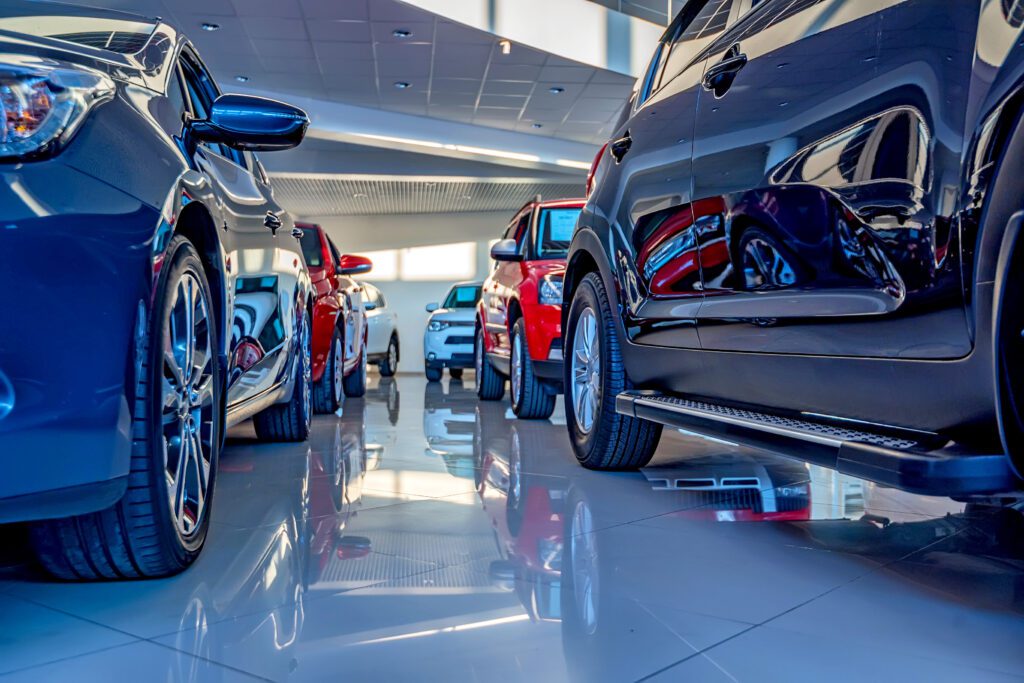The automotive industry is undergoing significant growth in ecommerce, revolutionizing the way buyers and sellers interact when doing business. Factors such as the rise of digitally native buyers, the influence of events like COVID-19 and the rapid growth of third-party vehicle marketplaces are compelling the industry to embrace ecommerce to stay relevant.
With projections that the U.S. auto and parts retail ecommerce sales will soar to $182.48 billion by 2026, and Fortune Business Insights predicting the global automotive ecommerce market to hit $213.08 billion by 2029, the automotive industry is primed for substantial growth.
This growth extends to B2B automotive businesses. Amid this B2B digital revolution, there are four key trends are shaping the landscape of automotive ecommerce.
Four accelerants shaping automotive ecommerce
1. Digital showrooms bring the dealership experience online
Despite the growing popularity of online car shopping, many customers still value the in-person dealership experience. PwC’s report reveals that approximately 80% of car customers prefer shopping in-person, citing reasons such as:
- Test-driving cars (89%)
- Face-to-face deals with salespeople (82%)
- Experiencing the car in person before purchasing (79%)
However, digital showrooms are emerging as an avenue for automotive brands to create immersive ecommerce experiences that mimic that of a dealership.
Digital showrooms allow customers to customize their desired vehicle’s features, trim, and model, and even conduct virtual test drives and demonstrations. BB Wheels, an aftermarket automotive retailer specializing in wheels, tires, and vehicle accessories, showcases this trend with its interactive Vehicle Visualizer, empowering customers to visualize how specific wheels would look on their vehicle. Such advancements bridge the gap between in-person and online shopping, making the automotive ecommerce journey more enticing and customer-centric.
2. Digital advertising drives revenue
In today’s ecommerce world, “meet your customers where they are” is a vital marketing mantra. Automotive retailers are embracing digital advertising to engage customers throughout the buyer journey, simplify the sales process, and ultimately convert more leads into sales. Social and online search channels like Facebook, Google and Instagram have become instrumental in boosting brand awareness and gathering valuable first-party data for personalized marketing. Not only can this increase brand awareness and drive revenue, but it also allows auto retailers to collect first-party data to better tailor the advertising experience for the customer.
Van Cafe, a manufacturer and retailer of Vanagon parts, successfully implemented Google Ads to enhance its traffic and target specific audiences. Leveraging Google’s AI capabilities, the company refined its ad targeting and witnessed an increase in site visits and conversions. Digital advertising enables automotive retailers to connect with potential customers effectively, reaching them at the right place and time, resulting in improved sales and customer engagement.
3. Convenient payment options streamline the experience
Purchasing a car has historically been riddled with challenges, including price negotiations, financing complexities, and tedious paperwork. However, the rise of digital-savvy automotive retailers and B2B buyers demand more flexible payment options. Automotive retailers, both online and traditional, are stepping up to meet this demand by offering mobile wallets, contactless transactions, and payment scheduling.
Brock’s Performance, a manufacturer and seller of name-brand parts, recognized the need for a seamless payment experience. To address this, the company introduced multiple payment options such as PayPal, Google Pay and Buy Now, Pay Later (BNPL), providing customers with the freedom to pay as they prefer. By accommodating diverse payment preferences, automotive retailers are streamlining the purchasing process, thereby increasing customer satisfaction, and driving sales.
4. Vehicle marketplaces rev up online sales
Third-party vehicle marketplaces have proven to be powerful allies for the automotive industry’s online sales. Platforms like Amazon, O’Reilly Auto Parts, Walmart, and eBay have already established customer bases, making them attractive for automotive brands looking to expand online. Notable examples include CarMax and Carvana, which primarily cater to used car buyers, and CarSaver at Walmart, offering both new and used cars through a network of dealers.
Fortune Business Insights reports that the availability of a wide range of automobiles and auto parts online, competitive pricing, 24/7 accessibility and price transparency contribute to the growth of this industry. Automotive companies integrating with third-party marketplaces capitalize on the existing demand from online car buyers, leveraging the success of these established platforms to drive their own online sales.
The automotive industry’s journey into ecommerce has only just begun, and the road ahead holds even more exciting opportunities. As ecommerce trends and technologies continue to evolve, automotive retailers that adapt and embrace innovation will be well-positioned to drive success in this dynamic market. By staying ahead of the curve and anticipating buyer needs, automotive ecommerce will continue to flourish, propelling the industry into a new era of online success.
Lance Owide is the B2B general manager at BigCommerce, an open, composable ecommerce platform for established and fast-growing large B2C and B2B brands.
Sign up
Sign up for a complimentary subscription to Digital Commerce 360 B2B News, published 4x/week. It covers technology and business trends in the growing B2B ecommerce industry.
Follow us on LinkedIn and be the first to know when we publish Digital Commerce 360 B2B News content.
Favorite